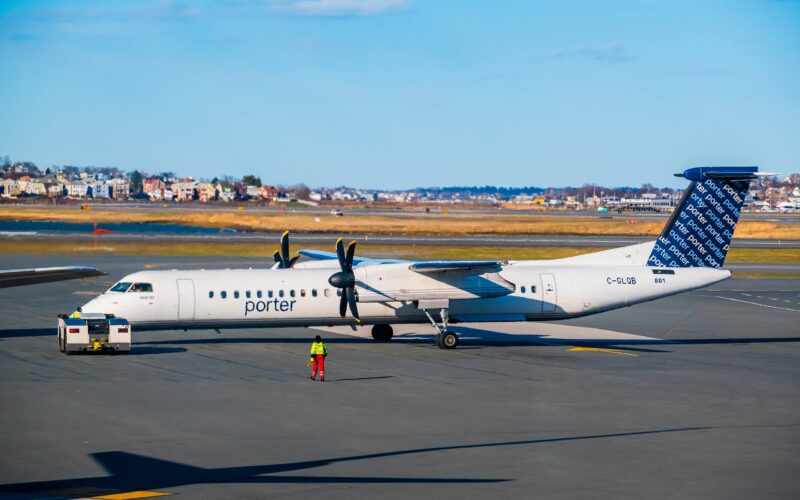Porter Airlines to develop alternative Montréal airport

By using this airport, which is located on the east bank of the Saint Lawrence River, Porter Airlines aims to replicate the strategy it already follows in the Toronto market, providing access to the city’s downtown using a secondary airport close to the city center. In this case, Saint-Hubert Longueuil Airport is slightly closer to downtown Montreal than Montréal-Pierre Elliott Trudeau International Airport (YUL), the city’s main airport, but it offers an alternative, uncongested gateway.
Porter is partnering with the operator of Saint-Hubert Longueuil Airport to build a brand new terminal with a capacity of up to four million passengers per year. Work on the new facility is expected to start in mid-2023 and to be completed by the end of 2024.
When announcing the investment, Porter stated that it had identified 10 routes spanning the width and breadth of Canada that could be launched from this new base in the near future. These would include destinations as far as Vancouver, on the West Coast of the country, as well as Newfoundland and Toronto’s two airports.
The new routes out of Saint-Hubert Longueuil will allow passengers travelling through this airport from regional destinations across Québec on local air operators to connect with Porter’s much larger domestic network.
However, the launch of a new base does not mean Porter is abandoning Montréal’s other airport. The airline has also announced its plans to increase its activity at YUL.
Porter already serves the Toronto market in a similar fashion, with scheduled flights at both Toronto Pearson International Airport (YYZ) and the smaller Billy Bishop Airport (YTZ), where it operates 20 routes and moves around three million passengers per year.
Porter’s operation at Billy Bishop is a blueprint for the new Montréal project, where the airline also cooperated closely with the airport operator in order to develop it as an alternative hub for short-haul flights.
The new terminal is being designed by Scott Associates Architects and will cover 21,000 square meters and boast nine air bridges. It will also be built taking into consideration not just the latest contemporary trends in aesthetics and materials, but also sustainability.
Porter Aviation, the owner of regional Canadian carrier Porter Airlines, is planning to open a new base at Montréal’s Saint-Hubert Longueuil Airport (YHU).
By using this airport, which is located on the east bank of the Saint Lawrence River, Porter Airlines aims to replicate the strategy it already follows in the Toronto market, providing access to the city’s downtown using a secondary airport close to the city center. In this case, Saint-Hubert Longueuil Airport is slightly closer to downtown Montreal than Montréal-Pierre Elliott Trudeau International Airport (YUL), the city’s main airport, but it offers an alternative, uncongested gateway.
Porter is partnering with the operator of Saint-Hubert Longueuil Airport to build a brand new terminal with a capacity of up to four million passengers per year. Work on the new facility is expected to start in mid-2023 and to be completed by the end of 2024.
When announcing the investment, Porter stated that it had identified 10 routes spanning the width and breadth of Canada that could be launched from this new base in the near future. These would include destinations as far as Vancouver, on the West Coast of the country, as well as Newfoundland and Toronto’s two airports.
The new routes out of Saint-Hubert Longueuil will allow passengers travelling through this airport from regional destinations across Québec on local air operators to connect with Porter’s much larger domestic network.
However, the launch of a new base does not mean Porter is abandoning Montréal’s other airport. The airline has also announced its plans to increase its activity at YUL.
Porter already serves the Toronto market in a similar fashion, with scheduled flights at both Toronto Pearson International Airport (YYZ) and the smaller Billy Bishop Airport (YTZ), where it operates 20 routes and moves around three million passengers per year.
Porter’s operation at Billy Bishop is a blueprint for the new Montréal project, where the airline also cooperated closely with the airport operator in order to develop it as an alternative hub for short-haul flights.
The new terminal is being designed by Scott Associates Architects and will cover 21,000 square meters and boast nine air bridges. It will also be built taking into consideration not just the latest contemporary trends in aesthetics and materials, but also sustainability.
